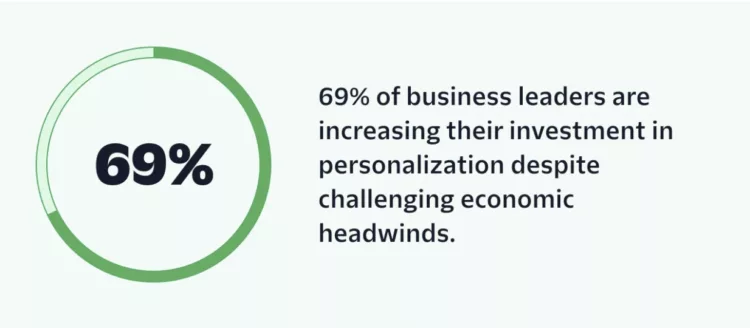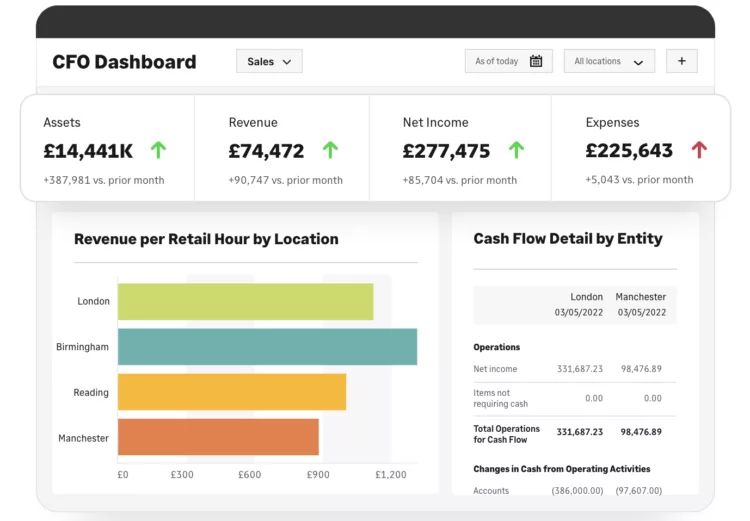How to make the most out of your eCommerce marketing budget?

At some point, practically every business asks the same question: ‘How can I spend my digital marketing budget effectively?’ Answering this question correctly is key to a thriving business. Pour too much into one marketing element, and you’ll starve other, equally important, aspects. If your budget is spread too thin, your marketing strategies won’t have the impact you want.
But how can you find that sweet spot between too much and too little? Well, don’t worry, today we’re here to help make the most of your ecommerce marketing budget.
Why effective marketing matters for ecommerce operations?
Marketing is essential for all ecommerce brands. You want to ensure that as many shoppers as possible are coming to your store. Not only that, you need to attract the right kind of visitors who will be interested in your products. Targeted, data-driven marketing is the only way to achieve this.
If you’re not careful, this kind of marketing can be extremely expensive. Let’s look at one very common example: search engine optimisation (SEO). If you want to climb to the top of the search results, you'll need a comprehensive strategy. This means investing in a keyword research tool, content writers, and site optimisation.
So, while essential, it's easy to see how your ecommerce marketing can get expensive quickly.
How to maximise your ecommerce marketing budget?
What’s the trick to staying on top of your budget? Below, we’ve explored some simple tips to help you.
1. Monitor customer purchase patterns and preferences

Just how well do you know your average customer? Which products are they most likely to respond to? What kind of experiences will send them away? Answering these questions is key if you want your marketing to succeed. To get this information, you need to understand your customers' preferences and behaviour.
Gathering and analysing your customer data can unlock insights into customer preferences and help you predict future demand. Retail business software helps you centralise your data and provides in-depth insights into your ecommerce channels. This includes purchasing recommendations that boost profits, save time, and help you adapt to market changes.
Building a sales funnel encompassing all the steps in the customer journey is a useful way of understanding buyer behaviour. Take a look at all the stages within your funnel. How do customers behave during each stage?
For instance, perhaps you find that many customers view products and then leave. This suggests that either your marketing is being directed at the wrong people or that customers need their minds jogging. In the latter case, you can allocate funds to remarketing tactics, such as product recommendation emails.
2. Optimise web design and content for organic traffic
We reflected on the importance of SEO earlier in the article. Digital advertising can only take you so far. A steady stream of organic traffic is essential for building a sustainable audience.
Many methods of SEO can help you climb the search engine results page (SERP). Having a focus on content marketing is one of the most effective means. Quality content optimised with the right keywords can attract users to your site.
A strong focus on user experience is also important for SEO. Consider simplifying navigation, using more appealing images, and creating a more mobile-friendly site.

Heat Mapping software is a useful tool here, as it can help you identify areas where customer experiences can be improved. As illustrated above, heat mapping highlights areas of the screen that users interact with. If you spot that certain key aspects of a page are being overlooked by users, then a redesign may be needed.
3. Track competitor strategies and performance
Looking to competitors can help guide spending decisions in your marketing. For example, what percentage of revenue do they spend on marketing? If you’re a new business, you’ll likely need to spend a little more to make an impact.
Similarly, what effective strategies are competitors spending their marketing budget on? Let’s say a rival has had success with AI-powered technologies. This could indicate that you should invest in more innovative forms of marketing.
That said, take this with a grain of salt. Just because a competitor has succeeded with a tactic doesn’t mean you will experience the same. Only pursue strategies that you’re confident your audience will respond to.
4. Explore cross-promotion with relevant partners
Are there any brands that appeal to audiences similar to yours but sell different products? If so, they may be prime candidates for cross-promotion. This is a form of joint marketing in which a partner advertises your products and vice versa. It's a cost-effective way of reaching new audiences, growing name recognition, and strengthening your brand.
Cross-promotion can take many forms, including:
Product bundles featuring items from both brands
Running co-branded competitions
Co-hosting an event with another brand
Appearing as a guest on another brand’s podcast
5. Focus resources on high-ROI marketing channels
Consider your previous marketing activities. What worked? What didn’t work? Did you spend too much or too little? With so many channels available, your marketing funds can stretch, especially if you’re on a small budget. It’s far better to focus on high-performing channels. If SEO is bringing lots of organic traffic but email marketing is less effective, focus on the former.
Try to look at each channel on a granular level to be sure cash is being spent efficiently. For instance, you might use your web analytics tool to monitor your social media ads. Perhaps Facebook brought a lot of visitors, but X (formally Twitter) was lagging behind. For future traffic campaigns, you should spend more on Facebook and less on X advertising.
6. Implement customer referral and affiliate programs
Customer referrals are a form of marketing where you don’t have to do any of the work. If you have loyal customers, they’ll bring their friends and family members. All you need to do in return is offer an incentive for referrals. This could be product discounts or a voucher for your store. It’s a great way of saving money while bringing in new customers.
If you want to go a step further, you can introduce affiliate marketing. Here, a third party draws customers to your store and receives a commission on any sales made. Affiliates handle marketing for you, so no involvement is needed on your part. An affiliate could be an influencer, a business, or a skilled self-employed marketer.
7. Prioritise customer retention to lower acquisition costs

Finding new customers will always be more expensive than retaining existing shoppers. That’s why holding onto your customers should be a top priority. To boost retention, look no further than personalisation.
As many as 62% of businesses say that customer retention is a top benefit of personalisation. This also makes the approach more cost-efficient. By offering tailored marketing, there’s less risk that customers won’t respond to your ads.
But to deliver these experiences, you’ll need to understand your target audience. This means collecting data – and lots of it. Be sure that you have an analytics solution with the ability to:
Segment your audience into specific groups
Track customer journeys across platforms, devices, and email
Offer easy integrations with your chosen marketing tools
8. Retarget interested audiences through remarketing
Sometimes, interested customers come to your store with the intention of returning later. But inevitably, time passes, and they forget about your brand. A simple reminder may be all that’s needed to evokepique their interest again.
Remarketing (sometimes known as retargeting) is designed to jog customers’ memories. Here, you’ll direct only to customers who visited your store but didn’t make a purchase. It’s a tried-and-tested method – people who view retargeting ads are 70% more likely to convert, making remarketing a more cost-efficient form of marketing.
9. Consistently review marketing costs to maximise returns
Your budgeting approach might be working well today but what about tomorrow? Customer habits change over time. Your marketing will need to adapt alongside them to remain relevant. This, in turn, requires you to reassess your budget regularly. After all, you won’t want to miss out on the latest marketing trend due to lack of funding.
Marketing audits are tThe best way to ensure that your ecommerce marketing budget is being used effectively. Auditing gives a deep dive into your marketing efforts. You’ll evaluate processes, spot performance gaps, and identify potential solutions. The findings of your audit will help steer your future budget. In general, try to aim for at least one marketing audit per year.

Every audit should be supported by a strong understanding of your overall finances. Make use of accounting software for key access to financial information and KPIs. Customised reports give you insight into how different areas of your business are running. Make sure your marketing budget doesn’t come at the expense of other key business areas, such as sales or product development.
Key takeaways
Balancing an ecommerce marketing budget isn’t easy. Growing a name online requires you to be present on many different marketing channels. And, of course, each requires funding. Factor in conflicting visions from different departments, and budgeting can become messy quickly.
To stay on top of your budget, stick to the nine tips outlined above. Let’s recap.
Keep a close eye on your sales funnel to monitor purchase patterns.
Leverage SEO to bring more organic traffic.
Look to your competitors to guide your approach (but don’t rely on them).
Work with partners to cross-promote your brand.
Monitor your marketing channels and focus your budget on the most effective ones.
Introduce referral and affiliate programs for free marketing.
Focus on customer retention through personalisation and other popular methods.
Remind visitors about your products through remarketing.
Carry out regular marketing audits to keep on track with your budget.
Rethinking your marketing budget might unlock new horizons for your business. Why not give it a go?
About the author
Jill Liliedahl, Senior Industry Marketing Director for Retail at Sage, leads product marketing for Sage's retail products Inventory Planner and Brightpearl by Sage. Jill connects retail and ecommerce businesses with Sage solutions, reducing growing pains through automation and supporting intelligent decisions for purchasing, stock planning, and forecasting to boost their bottom line.
Why It Matters to Renew Your Domain on Time?
Price change for multiple domain extensions as of 10th July
Related articles:
